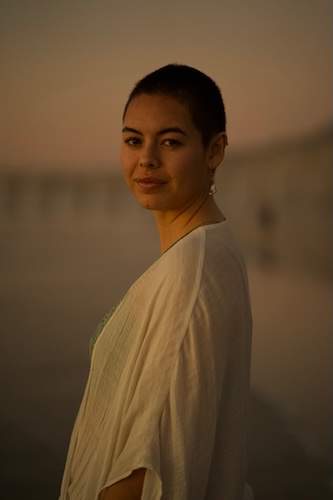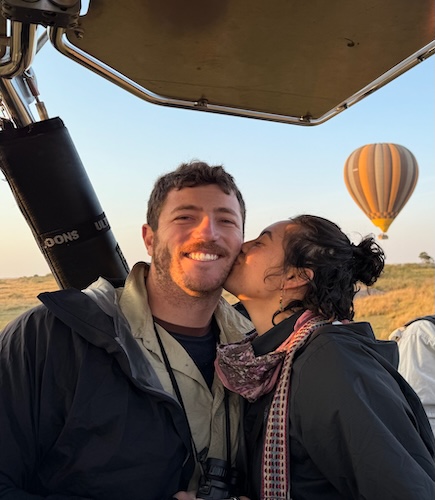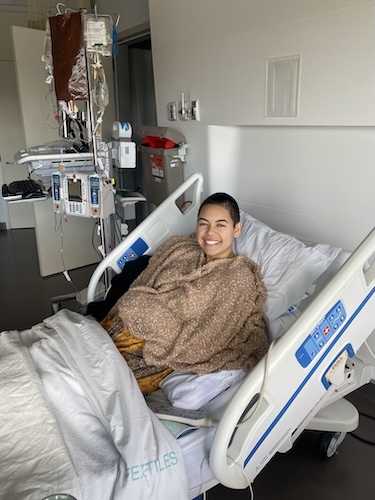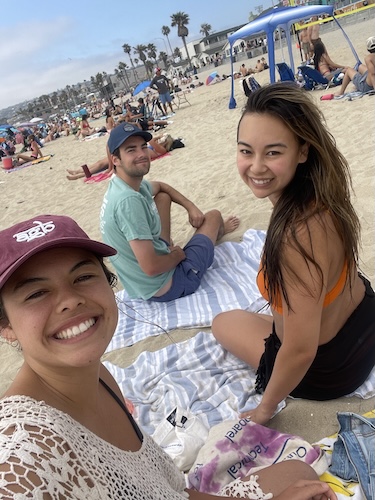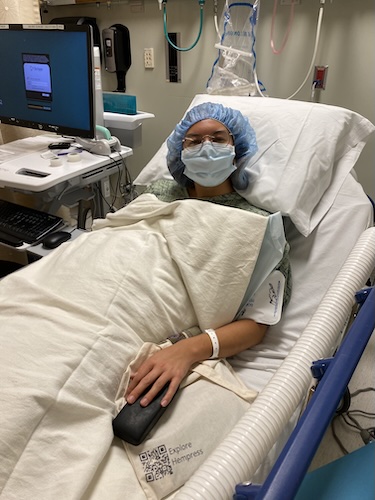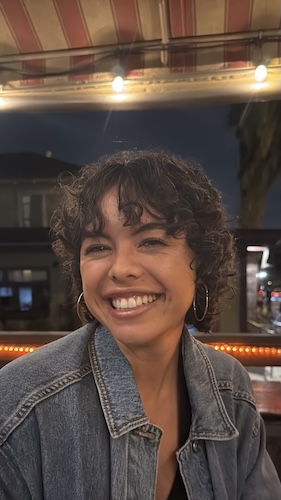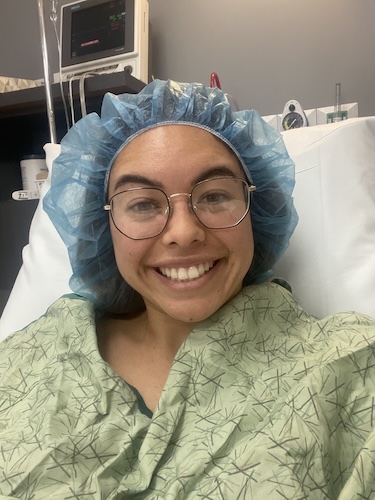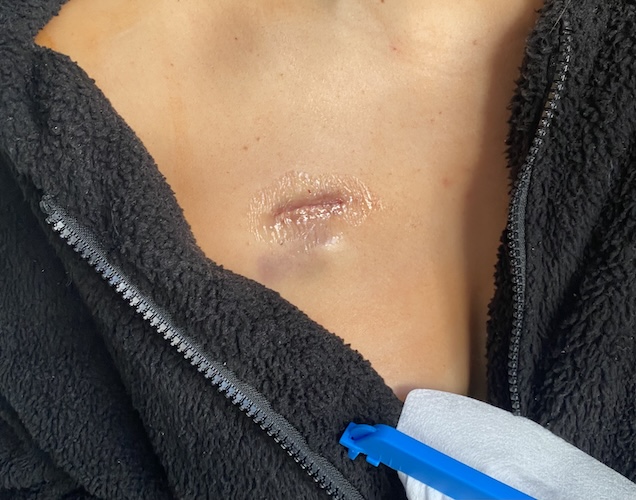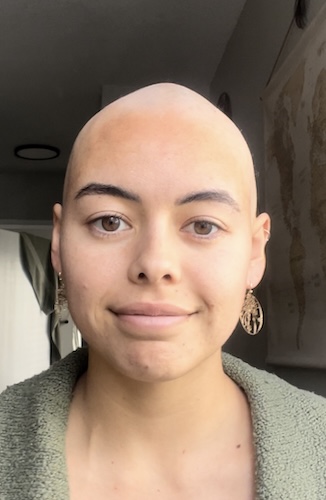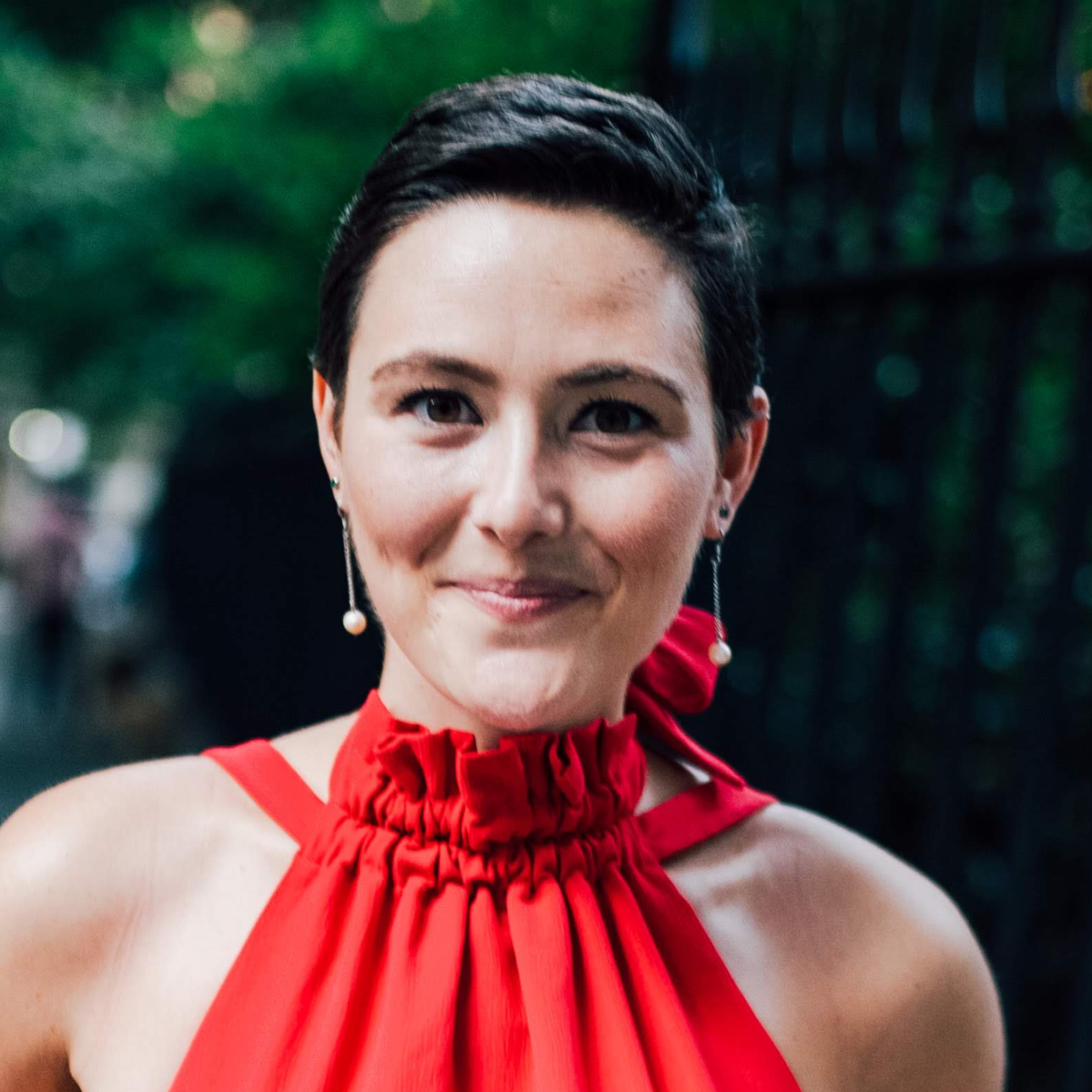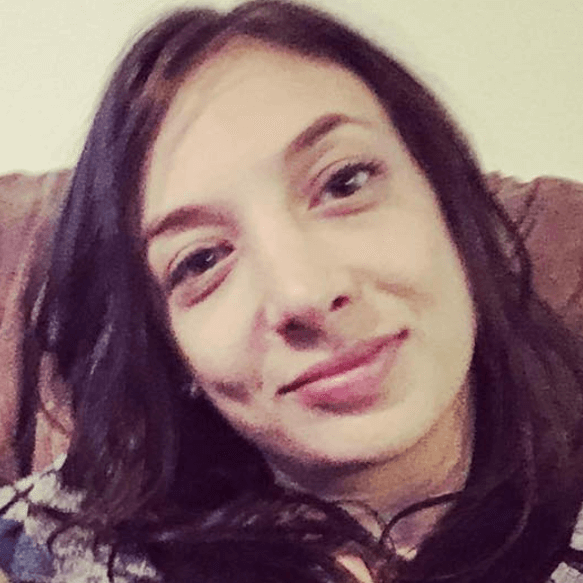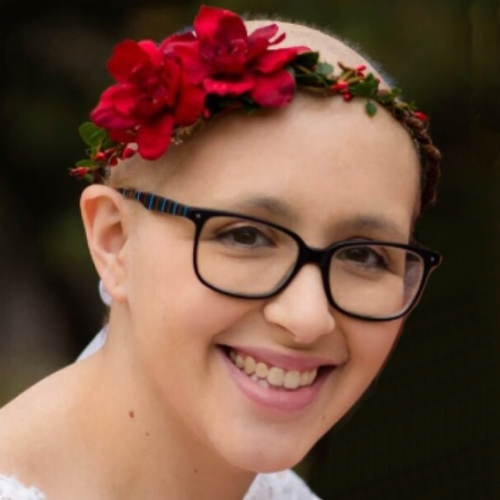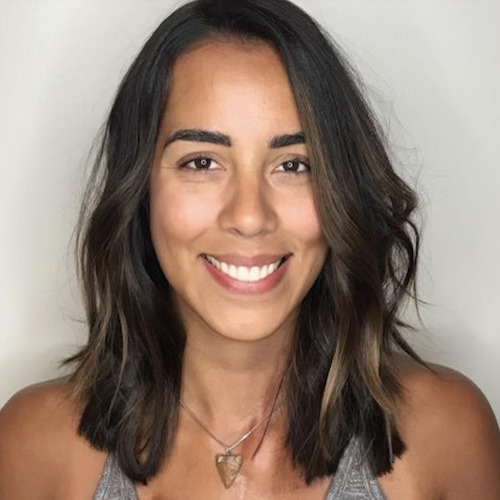Listening to Her Body Led McKenna Through Stage 3 Grade 3B Synovial Sarcoma
McKenna shares her experience with stage 3 grade 3B synovial sarcoma. In 2024, she received the diagnosis that would reshape her life. What started as a swollen leg and a string of minor but persistent health issues soon revealed itself to be synovial sarcoma, a rare and daunting cancer. Yet, as McKenna shares, the experience became less about fear and more about learning to take charge of her health in her own authentic way.
Interviewed by: Carly Knowlton
Edited by: Chris Sanchez
From the start, McKenna noticed that her body had been pleading for attention; she had been experiencing fatigue, insomnia, and recurring infections. When she experienced worrisome and persistent leg swelling, she underwent tests, a surgery, and finally a biopsy that confirmed that she had synovial sarcoma, a rare form of sarcoma or soft tissue or bone cancer. The initial treatment plan was aggressive: multiple rounds of chemotherapy, radiation, and a limb-saving surgery. However, after having undergone one grueling round of chemo, her intuition spoke loud and clear: her body couldn’t handle it. But instead of feeling defeated, she chose self-advocacy. She worked with her care team to pivot toward proton radiation and a highly personalized approach that combined conventional medicine with alternative and integrative therapies.
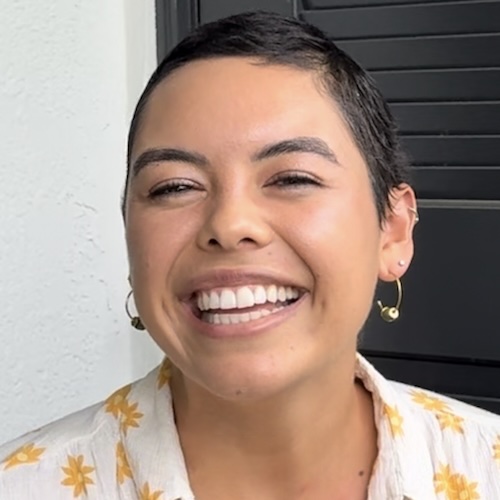
Throughout her healing experience, McKenna embraced practices that nourished both her body and spirit. She dove into research, read books on radical remission, and explored complementary methods like nutritional therapy, herbs, and emotional release work. Meditation, EMDR therapy, journaling, and somatic practices helped her regulate her nervous system and process the waves of grief and uncertainty. Meanwhile, she leaned into social support, allowing friends and family to drive her to appointments, cook meals, and simply be there. These were acts of connection that deepened her sense of resilience.
McKenna found transitioning to proton radiation an empowering decision. She transformed every session by visualizing healing, with music and mindful focus creating a space of hope. Alongside her treatments, she prioritized emotional healing as much as physical recovery. She cultivated gratitude, explored spirituality, and reconnected with her purpose, whether through quiet time in nature, candlelight meditations, or simply letting herself rest without guilt.
Today, McKenna celebrates being in a no-evidence-of-disease state, with two years of clean scans since her synovial sarcoma diagnosis. She credits this not to a single choice, but to a combination of medical care, self-advocacy, and the inner work of listening to her own needs. She now channels her energy into projects that inspire and support others, including a book and a podcast that share integrative approaches to cancer care, highlight diverse cultural perspectives, and empower patients to explore their options.
Watch McKenna’s video and read the transcript of her interview below.
- Discover how a jellyfish sting led to the discovery of a rare cancer
- See how one round of chemo changed McKenna’s entire approach to healing
- From despair to remission: how she reclaimed her life
- How nature, intuition, and self-advocacy became McKenna’s survival tools
- The life lessons she learned from facing synovial sarcoma at 24
- Name: McKenna A.
- Age at Diagnosis:
- 24
- Diagnosis:
- Synovial Sarcoma
- Staging:
- Stage 3
- Grade:
- Grade 3B
- Symptoms:
- Insomnia
- Weak immune system resulting in persistent illnesses such as UTIs and strep throat
- Severe swelling in left leg
- Treatments:
- Surgery: tumor excision
- Chemotherapy
- Radiation therapy: proton radiation
- Integrative therapies
This interview has been edited for clarity and length. This is not medical advice. Please consult with your healthcare provider to make informed treatment decisions.
The views and opinions expressed in this interview do not necessarily reflect those of The Patient Story.
- Hi, I'm McKenna
- How I knew something was off
- I went to the doctor
- Why I needed surgery
- The moment everything changed
- My treatment plan
- I did fertility preservation
- I took a bucket list trip before I started treatment
- I decided to stop treatment
- I started proton radiation
- How I coped with my diagnosis
- I went into being no evidence of disease
- How my diagnosis changed me
- How I spread awareness
- What I want others to know
Hi, I’m McKenna
I was diagnosed with synovial sarcoma exactly two years ago, when I was 24 years old.
I’m most passionate about storytelling and the environment, and learning about people and their cultures and health and all of that stuff. Psychology, all of it. I just love traveling, spending time in nature, and learning obscure things around the world.
How I knew something was off
I feel like my health was in decline for a long time.
I was constantly on the go. I had a lot of insomnia. And there were just these chronic issues that I was doing a band-aid solution for, including chronic yeast infections, UTIs, and constant strep throat. It was like these recurring health issues were telling me that something was wrong, but I didn’t know how to fix it or what the root cause was or anything. So that went on for years. And then the only sign of a tumor in my body was when the leg did get swollen. But I feel like there were just all of these warning signs that I would have never connected. Why is my body just shutting down? Why is my immune system so low? I did have a lot of fatigue, but I attribute that to the insomnia, so it’s really hard to tell even at this point, right?
A month before my leg got swollen, I was at Laguna Beach, swimming with the family. I got stung by a jellyfish, and I saw red stripes across my leg. The swelling went down though.
Later on, I was on this run, and then I got this shooting pain down my leg. And then it started to swell, and I thought I had sprained or broken my ankle. It got more and more swollen until it was getting harder to walk.
I thought, “Okay, it’s probably the jellyfish,” because I did some Googling and found that it’s possible to have late-onset swelling from a jellyfish sting up to six weeks after you get stung. So I pushed that connection. But looking back, it could have been that the jellyfish sting caused my lymph nodes to swell, which then furthered the effect of the tumor.
I went to the doctor
The doctor ran a test to see if I had blood clots, and it came back negative. But the doctor said, “Well, there’s nothing else this could be. We’re just going to put you on a blood thinner.” Two weeks prior, I had gone to get an ultrasound of the area, and as the technician was putting the wand over my pelvis, she said, “These are the two biggest blood clots I’ve seen in my whole career.”
I was on blood thinners for a couple of months to see if the swelling would go down. It didn’t go down that much. And that’s when they opted to do surgery.
Why I needed surgery
The MRI found that there was actually a mass down there that was blocking the veins from being able to transport the blood. And that’s what was causing the swelling, not blood clots. They went, “Well, we don’t know what this mass is. We’re just going to have to do a biopsy or just get it all out.”
So they went into surgery not knowing what it was. I still remember waking up from the anesthesia and just having a panic attack, screaming and crying. The nurses loaded me up on fentanyl and the strongest painkillers, because it just hurt so much. But I think it was also the emotional build-up of not knowing what was going on in my body, and all the stress in my life.
They extracted about 8cm of the mass, and the surgery only took a couple of hours. They brought me to my room and asked me to lie down, but also said to get up after a little while. I balked because I had just had surgery, but they said, “You need to because it helps the healing start.” I got up, and there was a rush of blood to the area, and that was really painful. But as I began to move, it did start to feel better.
The moment everything changed
It was midnight on a Saturday night when I got a message on MyChart. It said that the biopsy found that I had synovial sarcoma.
I started looking into it, but I couldn’t talk to anyone for a couple of days. I was actually in denial. I was thinking, “Okay, this tumor is obviously cancerous because that’s what MyChart is saying. But that doesn’t mean I have cancer. It’s different.”
I eventually met with my doctor. He told me, “Since we went into that surgery not knowing that it was cancerous, we didn’t take the margins or more outside of the tumor. And your margins were positive.”
So that meant that the cancer was spreading. And then my lymph nodes were getting swollen and all of that stuff. That was evidence that the cancer was in there. And so the doctor told me, “You have stage 3 grade 3B synovial sarcoma.”
My treatment plan
I went, “Alright, well, what’s next? What’s the treatment plan like? Let’s go.”
The doctor said, “It’s going to be 4 to 6 rounds of chemo. Then you’re going to do radiation and then do another surgery.” They call it a limb-saving surgery because it’s done in a way that I would still have a limb; getting amputated is apparently a common thing when you have a synovial sarcoma.
They referred me to UC San Diego because there was an oncologist there who specialized in synovial sarcoma. She’d already worked with two dozen people with synovial sarcoma, which was actually incredible because it is so rare. So I started seeing her and immediately felt better about everything.
She referred me to radiation. But she said, “Since you’re so young and because of the placement of the tumor, I think you should do proton radiation.” Unlike regular radiation, where the radiation goes all the way through and every organ and tissue gets blasted by radiation, proton radiation stops halfway and has an endpoint to the radiation. All the surrounding tissues and areas aren’t affected. Since the tumor was so close to my reproductive organs and some other organs too, the doctor thought that proton radiation would be better.
I did fertility preservation
At the time, I wasn’t even thinking about kids since my life was on the line. I couldn’t even think about where I wanted to be in ten years or something like that. Someone told me, though, “I know it feels like a lot right now, but if you even think there’s a chance that you’ll want kids, like you should do this now because this is your only chance to make sure you have kids, potentially.”
I went, “That’s so true.” I do want kids, but at the time, I just wasn’t sure. And I’ve always wanted to adopt. So I could do both that way. But I did go to the fertility specialist.
I took a bucket list trip before I started treatment
It was around Christmas time. A lot of people were slow to get back to me, and some offices were already closed. So I thought I probably wasn’t going to start treatment until January. “So now that I feel like my life might be coming to an end, what do I want to do? Oh, my favorite thing ever — travel.”
One of my best friends, Haley, was available to go to New Zealand with me. We spent almost a month there, and we borrowed my friend’s truck with a tent on top, and we traveled around the entire South Island, having these once-in-a-lifetime experiences.
I decided to stop treatment
I was supposed to do 4 to 6 rounds, but I ended up doing only one round of chemo.
After that first round, I remember lying in bed and thinking, “There’s 0% chance that I can do this again. If anything’s going to kill me, it’s going to be this.” And my doctor did say that my body wasn’t reacting well to it. Not that anyone’s does with chemo, but mine really wasn’t. It was just destroying my whole system. My body couldn’t handle it.
I remember telling my oncologist, “I’m so sorry, I can’t do this anymore. There’s no way.” I just had this deep-seated intuition that I needed to change up my whole plan.
I asked, “Can we just do the proton radiation? And I’m going to try a bunch of complementary and alternative integrative methods alongside it.”
I made the decision because, at the end of the day, it’s the patient’s choice. I added, “If I have to do that crazy surgery later, we can circle back to that, right?”
And so while I was getting ready to start proton radiation, I was just diving into every other possible way to heal. I was watching movies, reading books, reading Reddit, and talking to all of these health coaches and alternative medicine doctors. And I remember reading about radical remission. The author of the book studied all of these people who healed overnight and tried to find out what they did to transform their healing trajectory and go from being cancerous or having cancer to being in remission. And she came up with nine things: radically changing your diet, taking control of your health, following your intuition, using herbs and supplements, releasing suppressed emotions, increasing positive emotions, embracing social support, deepening your spiritual connection, and having a strong reason for living.
So after I learned about that, I went through each one and just dove into how I would apply them to my own life, and how I would change my plans to align with that. So that started a whole other path.
I said, “Okay, now I’m going to boost my immune system. Since it’s gone to zero from the chemo, I’m going to boost it with every nutrient it can get.” And then I started making decisions. I decided that I was going to be the final decision maker, regardless of whoever else is involved, and that I would be doing things on my terms and based on what I feel is right. And that falls into the category of following intuition. Every healing modality that I tried was purely based on whether it felt like it was going to be the right thing for me.
I also looked into increasing positive emotions and really just believing that I could heal, and manifesting that I was already healed. It was like I was targeting being cancer-free in five years. Therapy was so important for me to not hold on to lasting trauma or anger or sadness, and to truly just be able to sense what was happening with me. Embracing social support was also key. It was always so hard to accept and ask for help. But this journey forced me to do that. I accepted free rides, offers to take me to appointments, to cook a meal for me, to clean whatever, because I was so fatigued at that point. And that was such a beautiful lesson because I could also put myself in someone else’s shoes. If my friend were going through this, I would want to be there for them and to help in any way I can.
I also focused on deepening my spiritual connection and having a strong reason for living, and really evaluating why I want to live. Because that’s going to be my motivation to do all of this stuff. And so getting back to my passions, getting back to what I want to do here, like having an impact on the world and getting to spend time with the people I love and and deepening my spiritual connection.
I started proton radiation
I also did 33 sessions of proton radiation. So I’d go in every day, every weekday, and enter this big high-tech tube. The radiation would be directed exactly where it needed to be, and I needed to stay still. They would play me whatever music I wanted. So I gave them a list of all the songs that I wanted and everything.
The team was amazing, and my health coach at the time would tell me, “Every time you enter that machine, just focus on how much this radiation is helping you. Visualize this radiation killing all the cancer cells, and that’s going to amplify your response to it.”
I was also improving my diet. The number one rule, the first change people should make, is to eat no sugar at all because sugar can feed a lot of different cancers, and it suppresses the immune system. So that definitely helped me a lot. Also, because I was doing all these other things like ozone and I was trying these patches, my doctor was amazed that my skin was handling the treatment so well. Normally, it would have gotten completely burned.
How I coped with my diagnosis
I didn’t know what to do or how to manage my emotions. It started off with me pushing people away, and then slowly inviting them back in and relying on my social support to help me through this process.
I cried every day for at least a year and a half. And prior to that, I rarely ever cried. What helped during that time was meditating and going to EMDR therapy, and journaling throughout the entire process. I’m glad I journaled for the book, too. I also spent so much time outside, slowing down, doing candlelight meditation, listening to music, going to the beach, and just sitting on the sand. I would do all these things to relax my nervous system. Now I go to a somatic therapist, and that’s all we focus on: regulating and relaxing my nervous system.
I went into being no evidence of disease
I remember going in for my scans and the doctors saying, “There’s nothing there.”
Wow. It was just the most reaffirming moment that everything that I did worked, of everything that people helped me through. It worked.
It’s been two years since my initial diagnosis, and my scans are still coming back clean. So I’m excited to see out the rest of the three years and then officially be cancer-free.
How my diagnosis changed me
It transformed my life to the nth degree. I was someone who never stopped. I never took a deep breath; I was just on the go.
Now, I’m not working, I’m living alone, and I’m solely getting to sit and feel all of these things physically and emotionally. So my life went from extremely fast-paced to extreme stillness and slowness. My body just needed to rest, and for that, I had to learn how to rest.
It was like night and day. And even now, I have definitely slowed my life in a way that is way more aligned and sustainable.
I’m canceling plans and things like that because I have cancer, and I’m using that as my excuse. But can I just say no without giving any excuses? Can I prove to this cancer that I don’t need it anymore as an excuse? And that is really what guided the next part of my journey emotionally. How can I uphold my boundaries and truly listen to and make decisions for myself without using anything as an excuse? I don’t have the capacity for that. I don’t need an excuse anymore. I feel empowered now instead of feeling like a victim in that way.
Who am I now? It took me two years to figure that out. And now I know my identity is someone who deeply listens to themselves to show up in the best way possible. And now I am following my new passions of doing documentaries to highlight the wonderful people and things on this planet, and podcasting about my cancer experience. So I turned from being very driven and the hardest worker possible to being a creative who takes life so much slower, who is more introverted than before, and for whom rest is the number one priority. I have to sleep well for my body to heal. I have to eat well. I have to be happy. Now, my full-time job, in order to stay in remission, is to be happy.
How I spread awareness
The main thing that I’m doing now is writing a book. So one of my friends, Shannon, said, “I want to help write your story.” That’s what we’ve been doing now. We’re showcasing everything that I integrated, everything I tried, and what other cultures around the world do. When I got diagnosed, it felt like I only had two options. And there are just so many more than that. I really want to show people all the different treatment options that they do have and how they can work together. So that’s the goal of the book.
I also started a podcast that features experts in the cancer field and the latest innovations and treatments. We’re trying to present an unbiased showing of these different options, talk about what and who should consider them, and take a deep dive into the research around them.
What I want others to know
If you’ve just been diagnosed, take your time to figure out exactly how you want this to look, how you want to feel in it, and what you want to make your decisions from. And how to truly take your health journey into your own hands.
There is that inherent rush and pressure from everyone around you. Can you just clear your head enough and come into silence to figure out what you want to do? Because you are the priority now, and you need to prioritize your health.
It’s so important to advocate for yourself. You might think everyone else can access all that data in your chart, or that they’re going to remember what kind of medications you have or what kind of port you have, and all of that stuff, but they have dozens, if not hundreds, of patients to think about. And so you need to keep track of your own stuff. No one’s going to do it for you.
If you’re not getting the scans on time, or if the doctors tell you, “Oh, we don’t have an open slot for months,” whatever it is. Call every day, keep calling, be that annoying person. You can always get a second opinion. And that is so important too. You are empowered to get a second opinion from another doctor.

Inspired by McKenna's story?
Share your story, too!
More Synovial Sarcoma Stories
Kara L., Synovial Sarcoma, Stage 1B
Symptoms: Pain behind left knee, needle-like sensation in left foot
Treatments: Surgery to remove what was thought to be benign tumor, chemotherapy, final surgery, radiation (36 sessions)
...
Jillian J., Synovial Sarcoma, Stage 3
Symptom: Pain in leg for over 15 years
Treatments: Surgeries (tumor resection, thoracotomy)
...
Marisa C., Synovial Sarcoma, Stage 4
Symptom: Small bump on the foot (stable for years, then grew during pregnancy), pain when pressed
Treatments: Surgeries (below-knee amputation, pulmonary wedge resections, segmentectomy), chemotherapy, radiation (lungs & hip)
...
Julie K., High-Grade Poorly Differentiated Spindle Cell Synovial Sarcoma, Stage 4
Symptoms: Chest and back pain after car accident, trouble breathing
Treatments: Chemotherapy, surgeries (lung resection, video-assisted thoracoscopic surgery or VATS, neurectomy, rib removal), radiation therapy (CyberKnife)
...
McKenna A., Synovial Sarcoma, Stage 3 Grade 3B
Symptoms: Insomnia, weak immune system resulting in persistent illnesses such as UTIs and strep throat, severe swelling in left leg
Treatments: Surgery (tumor excision), chemotherapy, radiation therapy (proton radiation), integrative therapies
...
